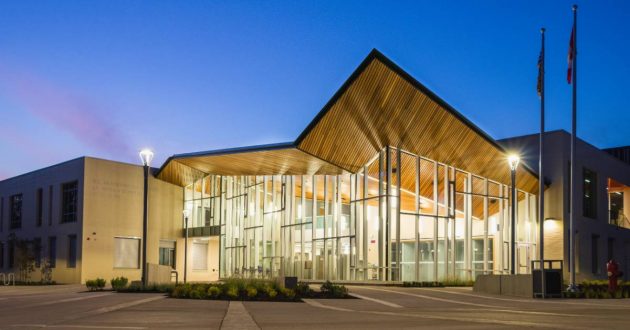School settings have a direct impact on students’ quality of learning. While it’s possible to study in an underground bunker, pleasant surroundings enhance the daily learning journey. Teachers, leadership and maintenance workers also all benefit from working in a healthy, modern building.
Modern schools are designed so that their architecture directly benefits the purpose of educational facilities. Rather than following the traditional model of hallways and closed classrooms, architects are relying on new research to build spaces that foster creativity, collaboration and security.

Here are five elements architects are incorporating into modern schools.
1. Tech Placement
As technology has evolved, the way that it’s used for learning has changed too. Many schools require computer labs for students who don’t own their own electronic devices or don’t have access to the internet at home. These labs need to be centralized, with space for adults to monitor them.
In addition to a lab, modern schools are also spreading technology across the facility. Because of increased tech connectivity, spaces that once were merely utilitarian can now be used as innovative classrooms. For example, blank walls and projectors can turn hallways and even stairs into temporary learning spaces.
The flexibility of modern technology means that students can collaborate and learn in the most unlikely places just as well as they can in their classrooms. Architects should work closely with educators and school leaders to determine which tech choices will best support learning objectives for students.
2. Student Connection
Over the last hundred years, teaching styles have changed significantly. Classrooms used to face one wall and a lecturer would stand and instruct students from behind a desk. However, this classroom orientation is changing in response to research that shows students learn best through collaboration and hands-on learning.
Modern schools include lab spaces where students can experiment, build and collaborate with each other through active participation in learning materials. Some schools are even incorporating glass panes into their interiors so that students feel connected to other grades and can observe continuity in their education.
Because collaboration is so important, many teachers are also opting for moveable furniture. Lightweight, flexible pieces allow them to rearrange the classroom for different activities and changing focal points. Modern architects are building classrooms with this need for flexibility in mind.
3. Outdoor Spaces
Although time outside has traditionally been part of the educational experience, new research is re-emphasizing the value of outdoor learning and play spaces. Architects should work with educators to create outdoor spaces that stimulate movement and inspire creativity.
Many modern schools are adding covered outdoor classrooms to their facility. This works especially well for younger grades, who are still learning about weather and need more movement and novelty in their day. However, all grades will benefit from the restorative effects of learning outside.
Of course, schools should also build playgrounds that allow for moments of fun and prime students’ brains for the hard work of learning. Design elements will vary depending on the playground’s site and grade level, but the pieces chosen should challenge students’ motor skills and inspire imaginative play.
4. Security Features
Unfortunately, school violence continues to occur every year. Architects play a pivotal role in protecting students and school staff from outside intruders. For example, some educational facilities are designed with bulletproof glass so that students and staff can shelter in place if the facility’s entrance is breached.
The layout of a school should also be planned so that doors and hallway traffic patterns work to protect students. Adding more glass to a facility can increase lines of sight and help teachers communicate in case of an emergency. Of course, installing effective sprinkler systems is also essential in case of a fire.
Thoughtful architecture in educational buildings can also protect students from each other. Unfortunately, peer bullying is common and many students struggle with their self-esteem and capacity to learn because of how they’re treated while at school. Some educators are increasing transparency in their hallways and stairwells to protect students from bullying.
5. Light and Air
Access to natural light improves mood, attention and sleep at night. In addition, fluorescent lighting has been shown to increase stress levels in some people. When students are stressed, their brain’s creativity and retention are negatively impacted.
Because lighting can play an important role in learning, architects are working to incorporate as much natural light into modern schools as possible. Creative structure and interior glass panels can help to increase exposure to natural light throughout educational buildings. In addition to brightening students’ minds, natural light can reduce energy costs.
Architects should also optimize air quality in learning facilities. Many construction materials release toxic chemicals over time that can pollute the air. Choosing eco-friendly construction materials and installing a quality ventilation system will ensure students stay healthy and focused on learning materials.
Modern Learning Environments
It’s true that learning can occur anywhere. However, modern schools provide students and teachers with an environment that fosters creativity and collaboration. New educational facilities are reducing indoor air pollution and working to connect students with each other and the world around them.
Architects and educators are drawing from research to redesign classrooms and expand the educational possibilities inside schools. Although modern architecture can add an exciting element to school structures, its primary goal is to create a space where students can build the skills they need to excel.














